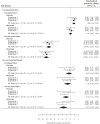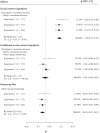Vaccination as a social contract
- PMID: 32541033
- PMCID: PMC7334515
- DOI: 10.1073/pnas.1919666117
Vaccination as a social contract
Abstract
Most vaccines protect both the vaccinated individual and the society by reducing the transmission of infectious diseases. In order to eliminate infectious diseases, individuals need to consider social welfare beyond mere self-interest-regardless of ethnic, religious, or national group borders. It has therefore been proposed that vaccination poses a social contract in which individuals are morally obliged to get vaccinated. However, little is known about whether individuals indeed act upon this social contract. If so, vaccinated individuals should reciprocate by being more generous to a vaccinated other. On the contrary, if the other doesn't vaccinate and violates the social contract, generosity should decline. Three preregistered experiments investigated how a person's own vaccination behavior, others' vaccination behavior, and others' group membership influenced a person's generosity toward respective others. The experiments consistently showed that especially compliant (i.e., vaccinated) individuals showed less generosity toward nonvaccinated individuals. This effect was independent of the others' group membership, suggesting an unconditional moral principle. An internal metaanalysis (n = 1,032) confirmed the overall social contract effect. In a fourth experiment (n = 1,212), this pattern was especially pronounced among vaccinated individuals who perceived vaccination as a moral obligation. It is concluded that vaccination is a social contract in which cooperation is the morally right choice. Individuals act upon the social contract, and more so the stronger they perceive it as a moral obligation. Emphasizing the social contract could be a promising intervention to increase vaccine uptake, prevent free riding, and, eventually, support the elimination of infectious diseases.
Keywords: generosity; reciprocity; vaccine advocacy; vaccine decision making; vaccine hesitancy.
Copyright © 2020 the Author(s). Published by PNAS.
Conflict of interest statement
The authors declare no competing interest.
Figures




Comment in
-
Vaccination as a social contract: The case of COVID-19 and US political partisanship.Proc Natl Acad Sci U S A. 2021 Mar 30;118(13):e2026745118. doi: 10.1073/pnas.2026745118. Proc Natl Acad Sci U S A. 2021. PMID: 33753515 Free PMC article. No abstract available.
-
Reply to Weisel: From polarization to vaccination and back.Proc Natl Acad Sci U S A. 2021 Mar 30;118(13):e2102717118. doi: 10.1073/pnas.2102717118. Proc Natl Acad Sci U S A. 2021. PMID: 33753521 Free PMC article. No abstract available.
-
No evidence that collective-good appeals best promote COVID-related health behaviors.Proc Natl Acad Sci U S A. 2021 Apr 6;118(14):e2100662118. doi: 10.1073/pnas.2100662118. Proc Natl Acad Sci U S A. 2021. PMID: 33762430 Free PMC article. No abstract available.
-
Reply to Rabb et al.: Why promoting COVID-19 vaccines with community immunity is not a good strategy (yet).Proc Natl Acad Sci U S A. 2021 Apr 6;118(14):e2102054118. doi: 10.1073/pnas.2102054118. Proc Natl Acad Sci U S A. 2021. PMID: 33762431 Free PMC article. No abstract available.
References
-
- WHO , New measles surveillance data from WHO https://www.who.int/immunization/newsroom/new-measles-data-august-2019/en/. Accessed 14 October 2019.
-
- WHO/UNICEF , Measles outbreak in the Pacific Situation Report No. 11. https://www.who.int/docs/default-source/wpro—documents/dps/outbreaks-and.... Accessed 20 February 2020.
-
- WHO , Ten threats to global health in 2019. https://www.who.int/emergencies/ten-threats-to-global-health-in-2019. Accessed 14 October 2019.
-
- Signorelli C., Iannazzo S., Odone A., The imperative of vaccination put into practice. Lancet Infect. Dis. 18, 26–27 (2018). - PubMed
-
- Yang Y. T., Reiss D. R., French mandatory vaccine policy. Vaccine 36, 1323–1325 (2018). - PubMed
Publication types
MeSH terms
LinkOut - more resources
Full Text Sources
Medical

